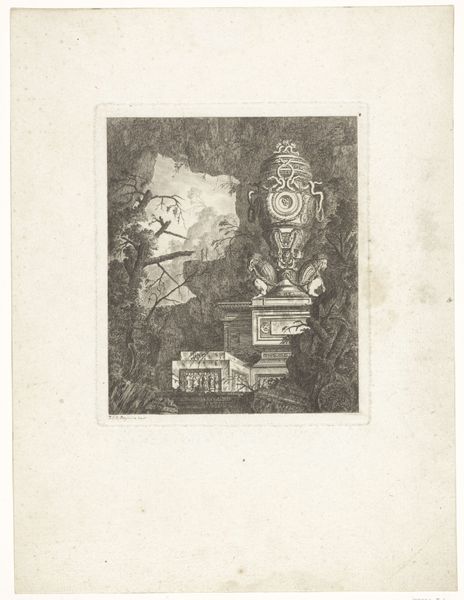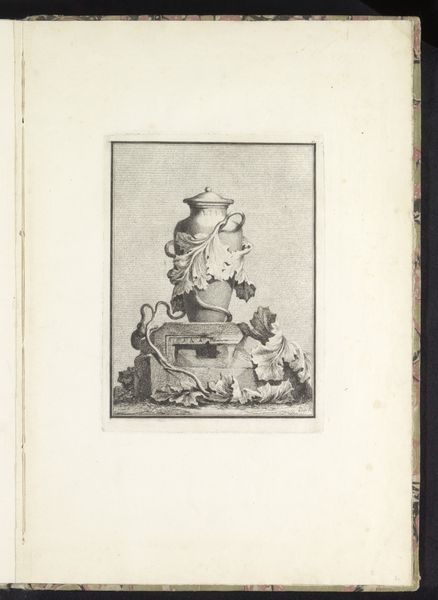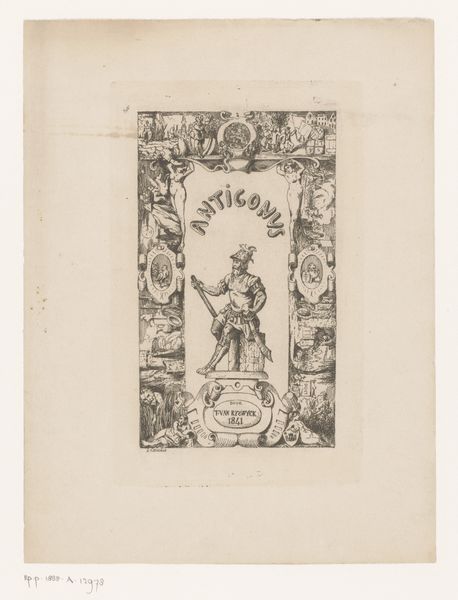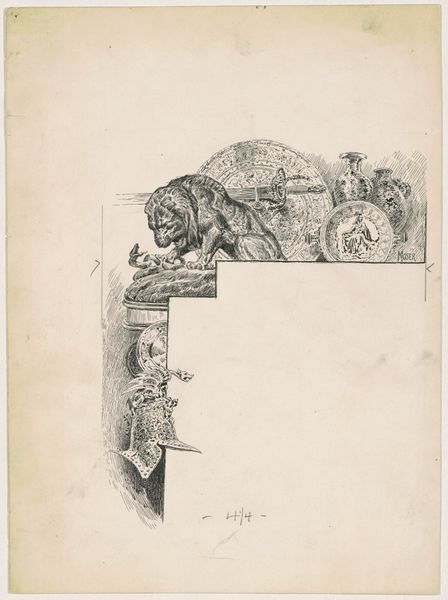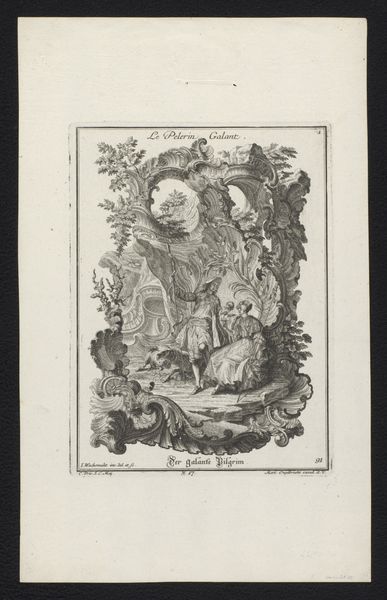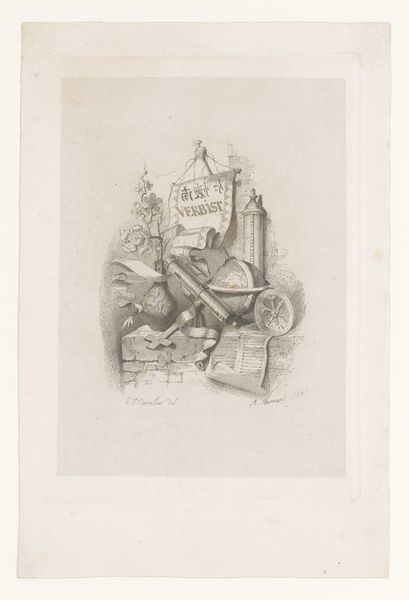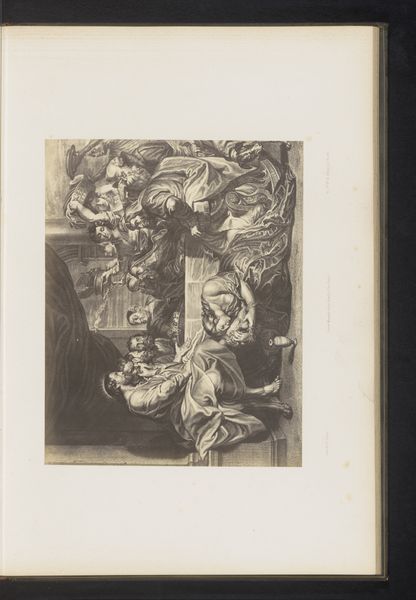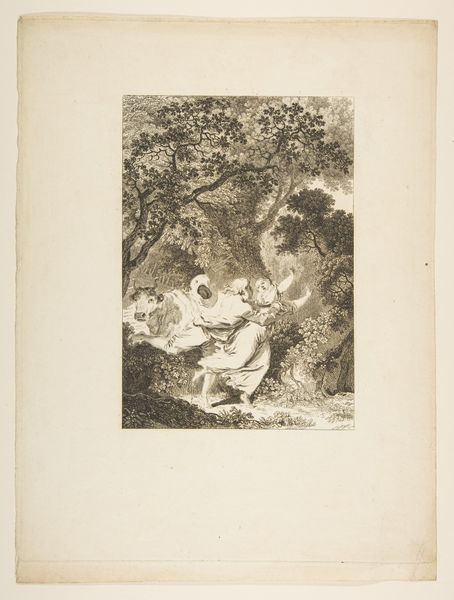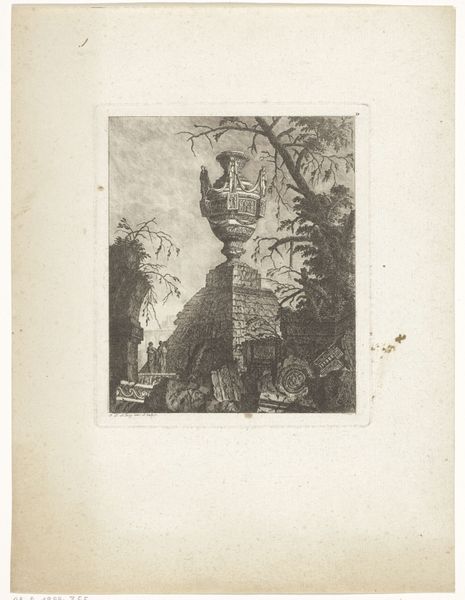
drawing, print, etching
#
drawing
#
neoclacissism
# print
#
etching
#
landscape
#
classical-realism
#
history-painting
Dimensions: 193 × 165 mm (plate); 285 × 235 mm (sheet)
Copyright: Public Domain
Curator: Ah, Legeay's "Antique Ruined Statuary." Created between 1767 and 1770. Isn’t it wonderfully melancholic? Editor: Melancholic is one word for it. My first impression is this potent mix of grandeur and decay. That stark black and white, the sheer scale of the urn dwarfing everything... it speaks volumes about power, loss, and time's relentless march. Curator: Exactly! He's capturing that late 18th-century obsession with antiquity, but twisting it. It's not just about admiring the Romans, it’s a meditation on impermanence. The very fine etching, this almost obsessive attention to detail and the way it creates a sense of depth, pulls you right in! Editor: It absolutely does. It’s like a stage set, isn’t it? All artifice, deliberately constructed. We’re not just seeing ruins; we’re seeing a ruin meticulously *performed*. Consider also the context. This neoclassical fascination arose amidst colonial expansion. This kind of imagery evokes ideas of dominance and the natural order, even decay and ruin. Curator: That's interesting. I tend to see a kind of wistful acceptance of life's ebb and flow, a memento mori, gently whispering "everything fades." The foliage seems almost desperate to reclaim what was once pristine. It has a very ghostly effect. Editor: It's both beautiful and deeply problematic, this wistfulness. Nostalgia always has a cost. Whose stories get erased, whose labor made these empires possible, and what violent power structures are getting obscured behind pretty etchings of decaying grandeur? Curator: I suppose, from my viewpoint, the “ghosts” become these traces of the past—histories layering upon histories, challenging any singular interpretation or sense of dominion. Editor: Perhaps that's where the real power of this piece lies, that tension between aesthetic pleasure and ethical unease, between individual emotion and structural injustice. It asks us to do more than simply admire; it asks us to contend with what the past continues to demand of us. Curator: Well said! I'll never look at overgrown urns the same way. Editor: Nor I. Art like this should unsettle us, make us question our own roles in the ongoing drama of history.
Comments
No comments
Be the first to comment and join the conversation on the ultimate creative platform.
